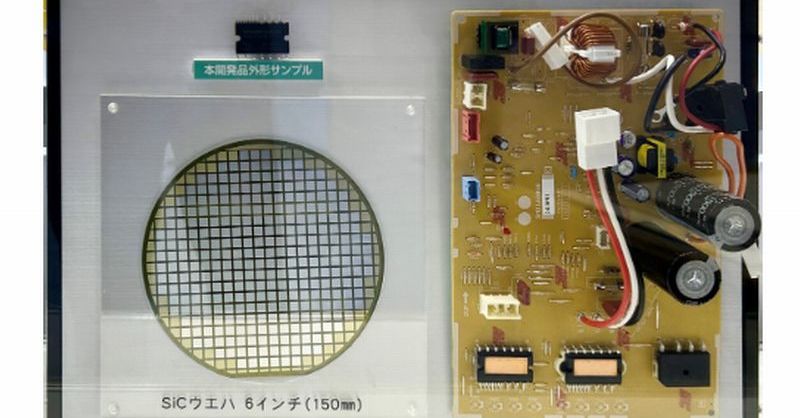Energy-Efficient Air Conditioning: Revolutionizing Cooling with SiC-Based IPMs
The global push for sustainability is driving innovation across all sectors, and the air conditioning industry is no exception. Traditional air conditioning units are notorious energy guzzlers, contributing significantly to carbon emissions. However, a groundbreaking development promises to dramatically improve efficiency: the SiC-based integrated power module (IPM). This article explores the transformative potential of SiC IPMs in revolutionizing energy-efficient air conditioning.
What is a SiC-Based IPM and Why is it Revolutionary?
Traditional air conditioners rely on Insulated Gate Bipolar Transistors (IGBTs) to control power flow. While functional, IGBTs suffer from significant energy losses, especially at higher frequencies. Silicon carbide (SiC) is a wide-bandgap semiconductor that offers superior performance compared to silicon-based IGBTs. SiC-based IPMs integrate several components onto a single module, including SiC MOSFETs (Metal-Oxide-Semiconductor Field-Effect Transistors), drivers, and protection circuits. This integration leads to:
- Higher Efficiency: SiC MOSFETs exhibit lower switching losses and higher operating temperatures, resulting in significantly improved energy efficiency. This translates directly to lower energy bills and a reduced carbon footprint.
- Smaller Size and Weight: The integrated design of SiC IPMs allows for a more compact and lightweight unit, making them ideal for various applications, from residential to commercial air conditioning systems.
- Improved Reliability: The robust nature of SiC and the integrated design enhance the overall reliability and lifespan of the air conditioning system. Reduced heat generation also contributes to longer component life.
- Faster Switching Speeds: SiC MOSFETs can switch on and off much faster than IGBTs, enabling more precise control and further optimizing energy consumption.
How SiC IPMs Impact Energy-Efficient Air Conditioning
The integration of SiC IPMs offers several tangible benefits for the air conditioning industry:
- Reduced Energy Consumption: Studies show that SiC-based systems can achieve energy savings of up to 20% compared to traditional IGBT-based systems. This substantial reduction directly impacts both operating costs and environmental impact.
- Lower Greenhouse Gas Emissions: By significantly reducing energy consumption, SiC IPMs contribute to a decrease in greenhouse gas emissions, helping to mitigate climate change.
- Improved Comfort: More efficient cooling systems can maintain consistent temperatures more effectively, leading to improved comfort and indoor air quality.
- Enhanced Grid Stability: Widespread adoption of SiC-based air conditioning systems can contribute to improved grid stability by reducing peak demand during high-usage periods.
The Future of Energy-Efficient Cooling with SiC IPMs
The development and adoption of SiC-based IPMs represent a significant leap forward in energy-efficient air conditioning. While the technology is still relatively new, its potential benefits are undeniable. Major manufacturers are already investing heavily in SiC technology, and we can expect to see a wider range of SiC-based air conditioning units available in the near future. This innovation promises a cooler, more sustainable future.
Challenges and Future Directions
While the advantages are substantial, challenges remain, including:
- Higher Initial Costs: SiC-based IPMs currently have a higher upfront cost compared to IGBT-based systems. However, the long-term energy savings can quickly offset this initial investment.
- Supply Chain Constraints: The availability of high-quality SiC materials and manufacturing capacity is still a limiting factor.
Further Research: To stay updated on the latest advancements in SiC technology for air conditioning, explore research papers and industry publications focused on wide-bandgap semiconductors and power electronics.
Call to Action: Learn more about sustainable cooling solutions and consider investing in energy-efficient appliances to contribute to a greener future. Contact your local HVAC professional to discuss options for upgrading your current system.
